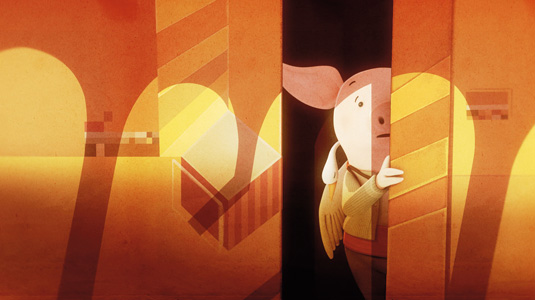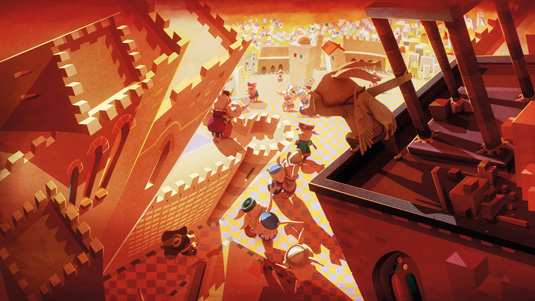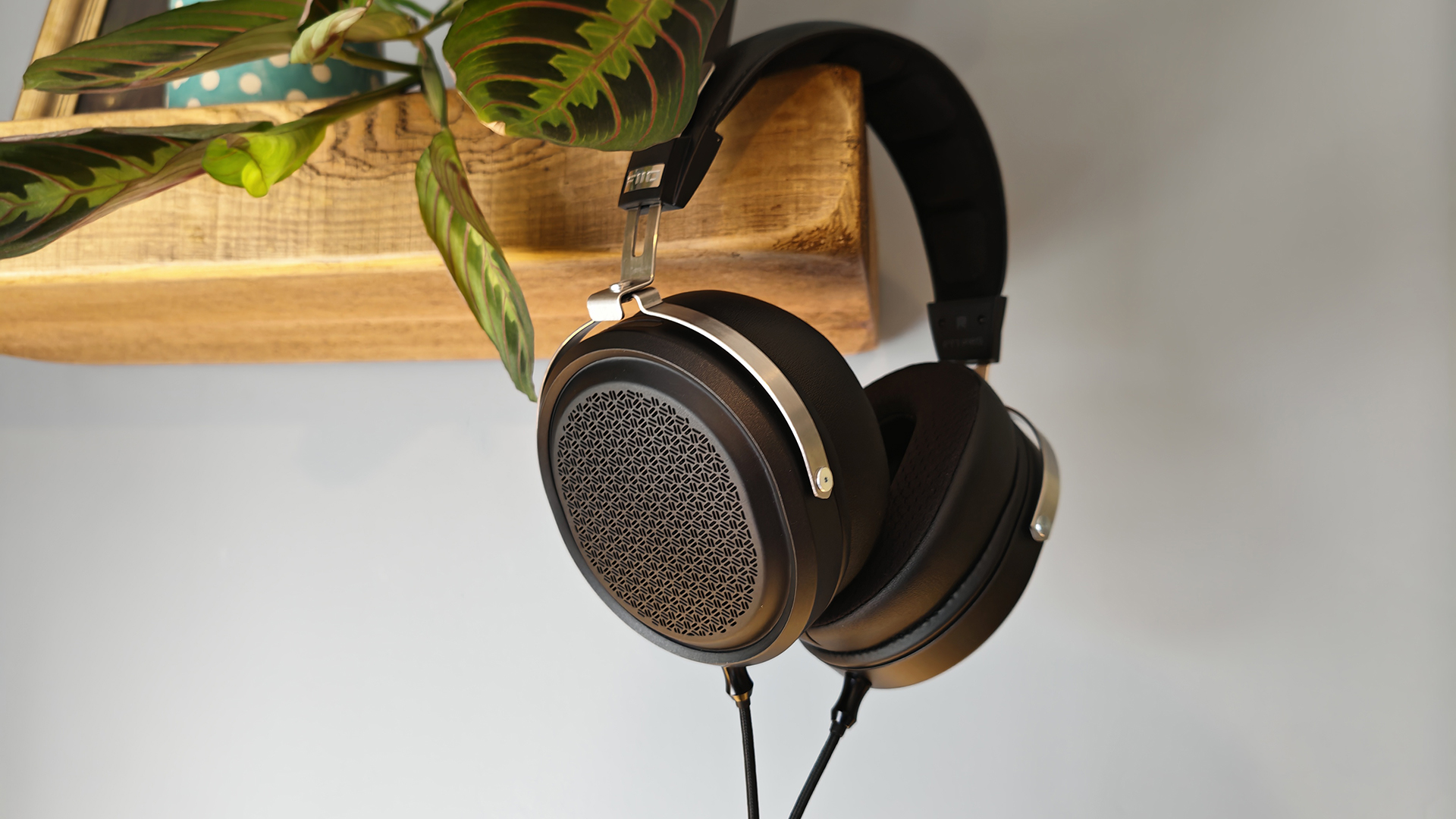Cubism and Japanese art inspire surreal animation
Through its dream-like visuals, pacing and music, Juste de l’eau delivers a strangely emotive tale.
This colourful animated short Juste de l'eau (Just Water) set in an anthropomorphic pig world immediately caught our eye. The visuals are truly stunning, from the attention to detail in the textures and colours of the environment, to the mind-boggling perspectives. We talked with director Carlos de Carvalho and technical director Pierric Danjou to find out more about the magical world.
Could you tell us about the story, and why you used animals to tell the tale?
CC: The story takes place at a time of great maritime discoveries. Navigators, who look like pigs, are coming back home after a long expedition. But the whole story could have just as easily been a modern-day tale about the return of Portuguese immigrants to their families every summer.
The film centres on a young pig in deep distress: no-one's there for him. The story evolves through his feelings and dreams. He wanders around in the city with a motionless goose attached to his back. This animal is the symbol of his thoughts: it embodies his desire to break free from the limits of his life. Its long wings give the main character the appearance of a weird angel.

What are the short's influences?
CC: My stories are inspired mostly by my past experiences. I transpose my sensations in a more surrealist context and try to find the right symbols. In my films, images without words seem more powerful to me – more evocative. My passion for art developed at an early age.
Cubism was a definite influence, as were many Japanese art forms
Cubism was a definite influence, as were many Japanese art forms: Noh and Kabuki theatre, Butoh dance, woodblock prints... Juste de l'eau takes from all of that, and more specifically from the German expressionist film Das Cabinet des Dr Caligari by Robert Wiene. I look for all possible means to extrapolate reality and build my own universe. The dream-like colours and amplified perspectives allow me to set my main elements freely, and try to reach the best composition.
What 3D software did you use?
PD: For Juste de l'eau, we chose to use Softimage. We had a limited time to make this short so we needed an intuitive and customisable package. Another advantage of Softimage is ICE; all the technical aspects of this project are based on it.
You can obtain some complex effects with a high framerate very quickly, once you understand the mathematics behind the 3D. What's more ICE is a nodal system, so everything is really clear and logical when you develop your own tools. This means you don't have to spend lots of time spotting mistakes when the 3D scenes have to be debugged.
Daily design news, reviews, how-tos and more, as picked by the editors.
The final point is the scripting and the plug-ins development. As I was in charge of the technical direction, it was safe to choose a software on which I had already developed some tools to save time, such as an automatic rig and a cache export system, which I had to adapt slightly.

Did you use or develop any new or notable techniques?
PD: We tend to work by animating 3D characters on 2D backgrounds. That’s how we can cheat with scale and perspective, so that the animation perfectly fits the backgrounds. For the rendering, we added some basic plane surfaces to receive shadows and occlusion, and then everything was mixed during compositing.
This article originally appeared in 3D World issue 182.

The Creative Bloq team is made up of a group of art and design enthusiasts, and has changed and evolved since Creative Bloq began back in 2012. The current website team consists of eight full-time members of staff: Editor Georgia Coggan, Deputy Editor Rosie Hilder, Ecommerce Editor Beren Neale, Senior News Editor Daniel Piper, Editor, Digital Art and 3D Ian Dean, Tech Reviews Editor Erlingur Einarsson, Ecommerce Writer Beth Nicholls and Staff Writer Natalie Fear, as well as a roster of freelancers from around the world. The ImagineFX magazine team also pitch in, ensuring that content from leading digital art publication ImagineFX is represented on Creative Bloq.
